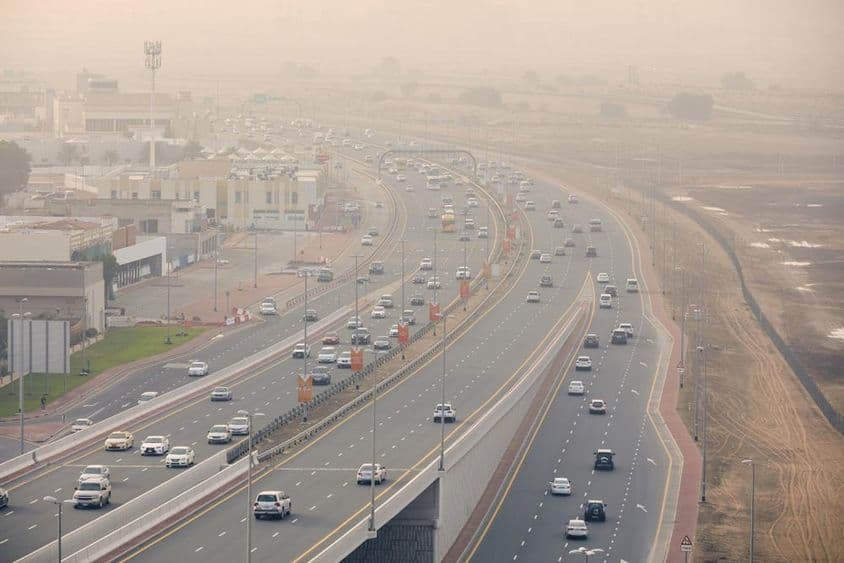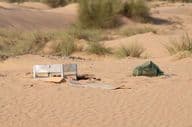Navigating UAE's Dusty and Changeable Weather

Changeable Weather and Dust Storms in the UAE – How to Protect Ourselves Appropriately?
On November 5, residents of the United Arab Emirates were greeted with dusty and foggy skies on a Wednesday morning, causing inconvenient symptoms like sneezing and allergic reactions for many. The National Center of Meteorology (NCM) issued a yellow warning about the dust, indicating that air quality could significantly deteriorate, especially for those with respiratory issues. Meteorological and health authorities are particularly attentive during such periods, as these conditions can cause not only transportation difficulties but also serious health risks.
The Duality of November Weather: Relief and Caution Simultaneously
November marks the arrival of the much-anticipated cooling period in the country, providing relief from the summer heat. Daytime temperatures have recently been around 34°C, while at night, they can drop to about 23°C. The humidity levels are moderate, offering a more pleasant experience for outdoor activities. However, these changes also bring increased wind movement, atmospheric instability, and occasional dust storms, which can even trigger a health emergency.
The Hidden Dangers of Air Pollution
On such a day, the concentration of airborne dust can significantly exceed normal levels, primarily endangering the elderly, children, and those with chronic illnesses. Tiny dust particles suspended in the air irritate the respiratory system and can exacerbate asthma, bronchitis, or other lung diseases. This period can be particularly taxing for allergy sufferers, as symptoms intensify and common complaints include a sore throat, itchy eyes, and a congested nose.
Health Authority Advice – 7 Preventive Measures
The Emirates Health Services Corporation offers residents seven preventive measures to follow during dusty and changeable weather conditions. These are especially recommended for those more sensitive to environmental impacts:
1. Keep windows and doors closed to prevent dust from entering the home.
2. Avoid staying outdoors, especially when the wind is strong or visibility is low.
3. Wear a mask or damp cloth over the face to reduce dust inhalation through the nose and mouth.
4. While driving, turn off the outside air intake, using the vehicle's internal circulation setting.
5. Protect eyes with sunglasses or goggles to prevent irritation from dust particles.
6. If experiencing allergy or respiratory symptoms, immediately visit the nearest health center.
7. Those with chronic respiratory illnesses should take medications regularly and use inhalers as prescribed.
The Impact of Weather on Well-being
The changeable weather can cause not only physical discomfort but also affect our overall well-being. Dusty air can lead to fatigue, headaches, and concentration difficulties. During days of poor air quality, it's advisable to reduce outdoor physical activities, especially sports, running or cycling. If staying outside is necessary, it's best to choose less demanding times of the day – such as early morning or late evening.
What Can We Expect in the Coming Days?
Current forecasts indicate that north-westerly winds will dominate the country, resulting in a slight temperature decrease over the next few days. However, due to low-pressure systems arriving from the south and southeast, a mild warming could follow. This period typically brings unpredictable weather – we can experience overcast skies, followed by sunny afternoons, and even light rain in some areas, all within a single day. While this variety can provide pleasant coolness, it also requires increased attention from residents.
Hydration, Rest, and Adaptation
Sufficient fluid intake and rest remain crucial for maintaining health. Although moderately humid air is more comfortable than the summer humidity, a dusty environment can dry out the mucous membranes, making regular water consumption essential. Those spending considerable time outdoors – for instance, engaging in outdoor work – should pay special attention to using masks and wearing appropriate clothing to minimize contact with pollutants.
Final Thoughts
November weather in the UAE brings both relief and new challenges. Dust storms, atmospheric fluctuations, and windstorms require significant attention – not only from a health risk perspective but also regarding transportation, well-being, and everyday routines. Timely preventive measures can help avoid inconveniences and ensure peaceful days, even in the most capricious periods. Dubai and the entire country are increasingly prepared to handle such situations – all residents need to do is adhere to the recommended precautions and follow forecasts closely.
(The article source is a statement from the National Center of Meteorology (NCM).)
If you find any errors on this page, please let us know via email.


